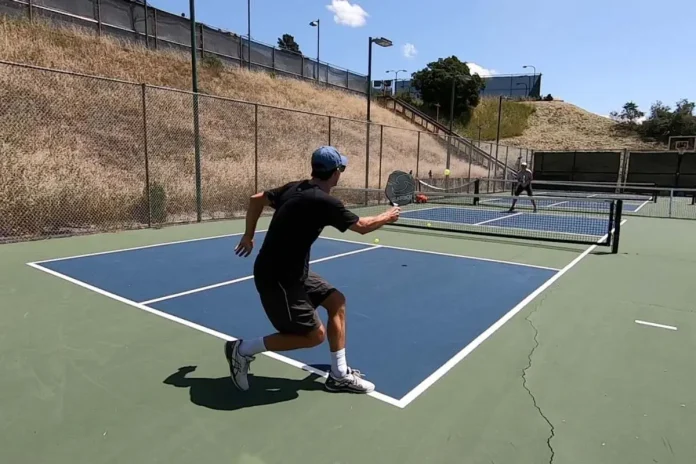Pickleball Serve Pre-Routine Tips: In pickleball, the serve is one of the most important shots. A strong, well-placed serve can set up the entire rally. Experts say a pre-serve routine—small, repeated actions before hitting the ball—helps players focus, stay calm, and improve consistency, whether in casual play or tournaments.
Why a Pre-Serve Routine Matters
A pre-serve routine is a short, repeatable set of actions that prepares a player mentally and physically. It helps create focus, reduce mistakes, and manage pressure. Players who use routines consistently are less likely to repeat errors and more likely to execute their serves effectively.
Sport psychology research shows that routines improve attentional control, helping players block distractions and focus on the task at hand. In pickleball, nearly half of rallies end within the first three shots, making the serve a critical moment. A strong serve can control the return and make the next shot easier.
Lessons From Other Sports
Athletes in tennis, basketball, and golf use pre-performance rituals for consistency. Rafael Nadal adjusts his shirt, lines up his bottles, and bounces the ball multiple times before serving. Steph Curry bounces and spins the basketball, then takes a breath before a free throw. Golfers use waggles and pauses before every shot.
The principle is the same in pickleball: a small, consistent routine signals the body and mind that it is time to perform. This consistency improves rhythm, timing, and confidence.
The Physical Impact of a Routine
A deep, accurate serve forces weaker returns from opponents, making the next shot easier. Quick, shallow serves often lead to aggressive returns and defensive play. Players who pause and focus before serving can better control the rally, even without changing mechanics. Focusing on depth over spin or speed is often the most effective strategy.
Rushed vs. Prepared Serves
Players who rush their serve often give opponents an advantage. Those who pause, focus, and follow a routine create better opportunities to control the point. The difference comes from mindset, not skill alone. A calm, consistent routine helps players execute the serve as intended.
Building a Routine
Players should start simple:
-
Anchor with a cue: Pick one physical action, like a bounce, paddle tap, or breath.
-
Add intention: Decide on a target and visualize the next shot.
-
Stay consistent: Repeat the routine the same way at every score.
Routines should reflect the player’s style. Whether tapping the thigh or taking a deep breath, consistency is the key.
Adapting to Context
Routines change depending on the situation:
-
Recreational play: Keep it short and simple.
-
Tournaments: Slightly longer sequences can help manage nerves and crowd noise.
-
Indoor vs. outdoor: Outdoors, a routine helps cope with wind, sun, or shadows.
When Routines Become a Crutch
Routines should calm the nervous system, not create stress. If a minor disruption, like a ball rolling onto the court, upsets the sequence, the routine is no longer helpful. Flexible routines anchor focus without slowing down play or adding anxiety.
The serve is one of the few moments in pickleball a player fully controls. A pre-serve routine provides focus, steadiness, and consistency. Small pauses, repeated actions, and mental preparation help players set the rally on their terms and improve performance, whether at a casual game or in competition.
News in Brief: Pickleball Serve Pre-Routine Tips
A pre-serve routine in pickleball helps players focus, reduce mistakes, and control rallies. Experts recommend consistent actions like a bounce, breath, or paddle tap before serving. Strong routines improve accuracy, depth, and mental control. Flexible, simple routines work best for casual play, tournaments, and changing conditions.
ALSO READ: USA Pickleball Serves Up Game-Changing Grants, Bringing Pickleball to 300,000 New Players Nationwide

